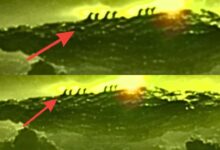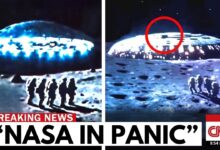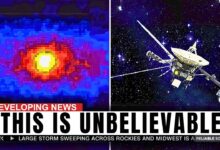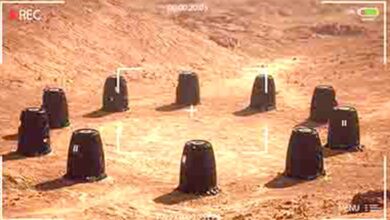NASA Just Revealed the Edge of the Universe… And It’s Totally NOT What We Thought
The James Webb Space Telescope (JWST) has just sent back data that could force scientists to completely rewrite our understanding of the cosmos. This isn’t just another survey of distant galaxies—it’s a window into the true edge of the observable universe, and what it’s revealing is far stranger than anyone anticipated.
For decades, astronomers assumed the universe’s edge was a hazy boundary—a limit in time and distance, nothing more. But JWST’s observations suggest something extraordinary: structure, motion, and clustering at the very limits of what we can see. The universe may not be the smooth, symmetrical expanse we once imagined. Instead, galaxies near the observable edge are forming faster and brighter than any model allows. These aren’t faint smudges—they are fully formed cosmic cities, complete with metal-rich stars, some just 300 million years after the Big Bang.
Even more shocking are the supermassive black holes appearing almost immediately after the universe’s birth. Galaxy UHZ1, for example, contains a black hole weighing tens of millions of solar masses when the universe was less than 500 million years old. The Cosmos Web Survey, mapping nearly 800,000 galaxies, revealed ten times more galaxies in the early universe than Hubble predicted. Caitlyn Casey, co-leader of the project, remarked, “The universe was producing too much light too early. We have no idea how this is physically possible.”
Some theorists propose that primordial gas clouds may have skipped star formation entirely, collapsing straight into black holes—a radical idea that would upend our understanding of the universe’s first chapters. Imagine galaxies forming faster than time itself should allow, skyscrapers rising overnight in a cosmic blackout. The universe’s edge is far from empty. JWST also shows density asymmetries on massive scales, meaning the early cosmos is uneven in ways that defy classical cosmology.
When combined with previous dark flow observations, a startling pattern emerges: some galaxy clusters are streaming toward an unseen attractor, as if something massive beyond our observable universe is tugging at spacetime itself. NASA tracked this motion over 2.5 billion light-years, and the pattern persists—completely unexpected if matter were evenly distributed. Could this be gravity from a hidden structure? Something stranger?
JWST’s data also ties into anomalies in the cosmic microwave background (CMB), like the infamous axis of evil—a puzzling cold spot that violates predictions for a uniform universe. Large-scale galaxy clustering patterns appear to align with these anomalies, hinting that the cosmos might be slightly lopsided. Even more mind-bending is the Hercules-Corona Borealis Great Wall, a cosmic structure spanning over 10 billion light-years, nearly 10% of the observable universe. Standard cosmology says structures of this size shouldn’t exist: gravity hasn’t had enough time to assemble such a behemoth.
Some theorists suggest these anomalies could be remnants of a previous universe or the result of cosmic inflation with unexpected power on large scales. Time itself may behave differently at these extremes. Observations of distant supernovae suggest time dilation that doesn’t match relativity, hinting that the early universe may have experienced nonlinear time flow. The Hubble tension—the mismatch between early and late expansion rates—could be a symptom of this deeper inconsistency.
Future missions, like the Nancy Grace Roman Space Telescope, promise to push these boundaries further. By mapping billions of galaxies in 3D, scientists hope to detect primordial gravitational waves, the earliest ripples in spacetime, and even probe quantum limits of the universe itself. Could our universe be just one bubble in a vast multiverse? Each discovery brings more questions: the cosmos is dynamic, unpredictable, and far stranger than we imagined.
JWST is just the beginning. Every new image, every subtle signal from the edge, reminds us that the universe isn’t passive—it’s active, mysterious, and possibly more complex than anything we’ve yet dared to dream.




